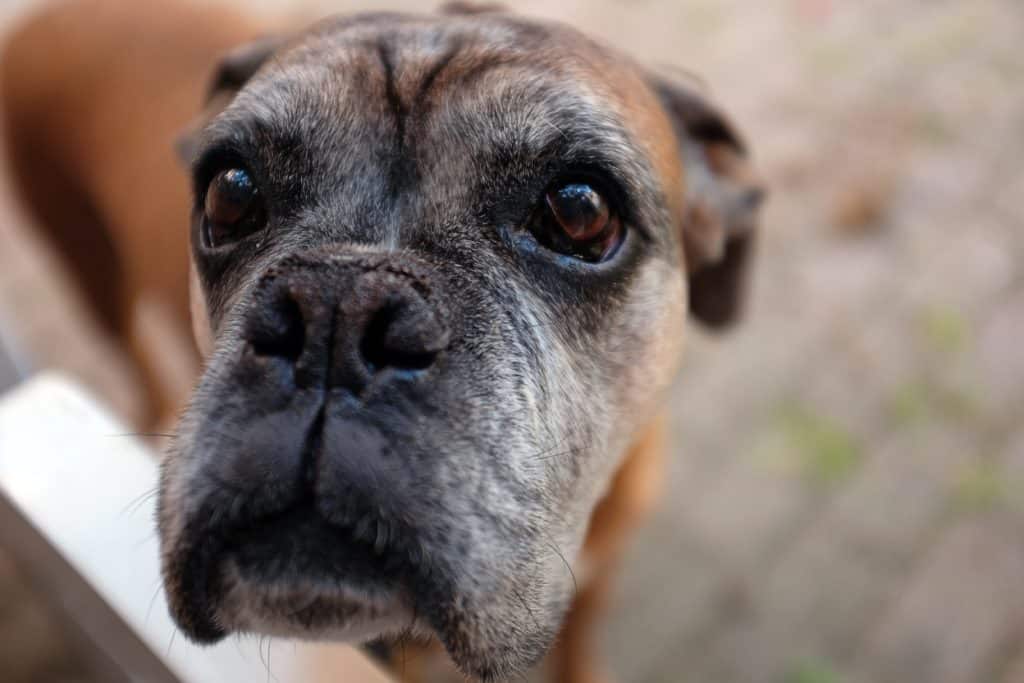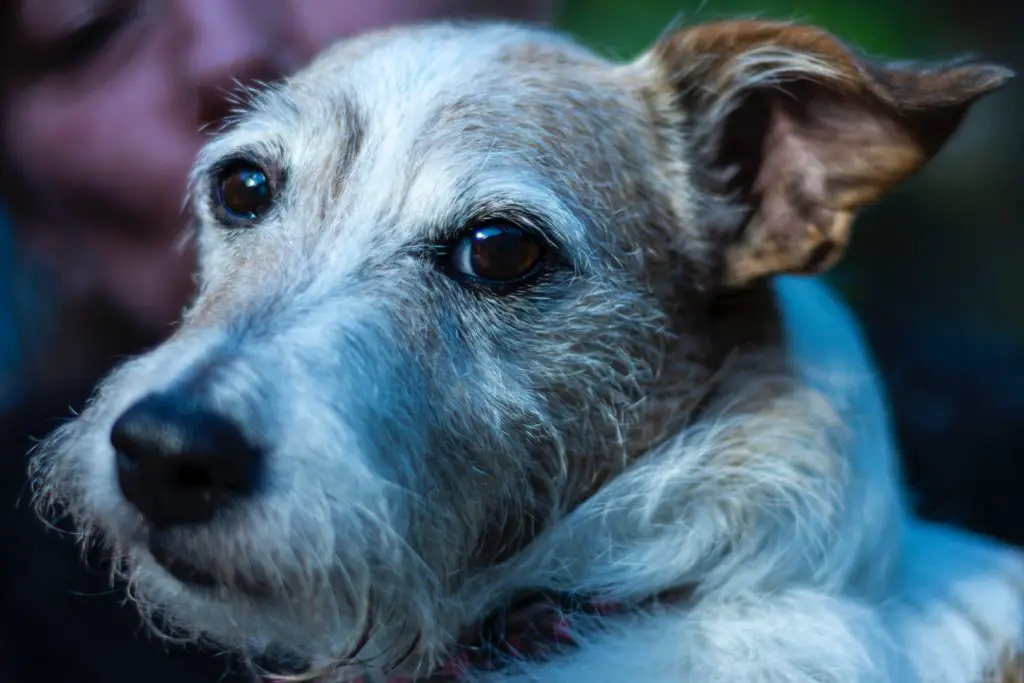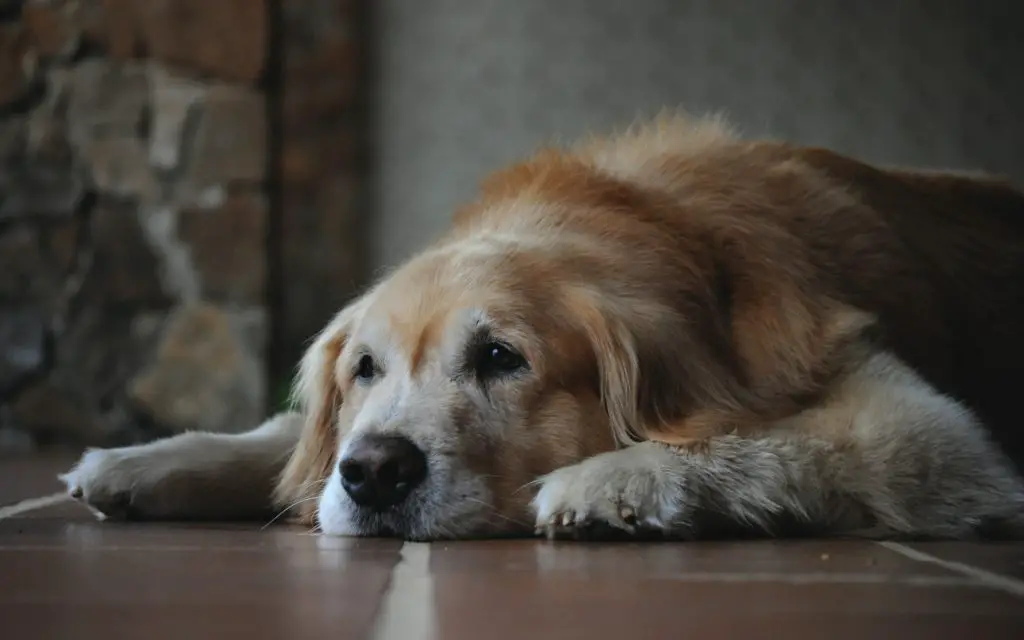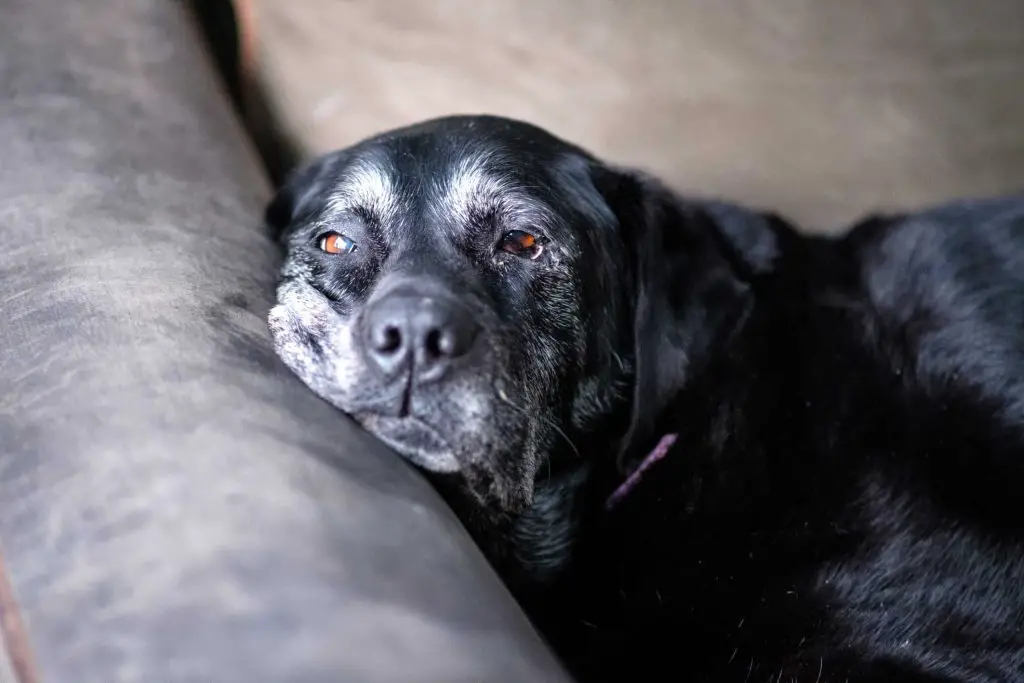It is most common to associate dog training with young dogs, not older dogs. The good news is that dogs can learn new skills at any stage of life. In fact, there are advantages of spending time training older dogs.
You can learn how to teach an older dog new tricks that will benefit both humans and canines. One plus is older dogs often have the ability to focus for longer during the training time. When training your older dog, you can spend more time each day learning that new trick.
The benefits of learning how to teach an older dog new tricks is invaluable. To enable you and your dog more success follow the tips to training older dogs. You can begin teaching your dog today. A dog is never too old to learn obedience skills or new tricks.
Related Articles:
- How to Train a Deaf Dog to Stop Barking
- How to Get the Attention of a Deaf Dog
- How to Train a Deaf Dog to Sit and Stay
- How to Train a Deaf Dog with Hand Signals
- How to Train a Deaf Dog
- How to Potty Train a Deaf Dog
How to Teach an Older Dog New Tricks: Benefits
The valuable benefits of learning to teach an older dog new tricks are rewarding for any dog owner.
Trust. The very best benefit is the trust and connection made between dogs and owners. When humans spend quality time with their dog, they have the opportunity to read dog body language, work on eye contact and help their dog stay calm, which all builds connection.
A dog that trusts their owner will allow for a strong connection and priceless companionship.
Mental Stimulation. A dog that is active in both mind and body is going to be a healthier dog. Dogs like jobs, even if it is disguised as a trick. Most dogs like a challenge such as learning to find a treat or learning new vocabulary.
Stimulating a dog mentally wards off boredom and often keeps a dog from seeking out the mischief in the home.
Encourages movement. As our dogs age, they can seem content to lay by our side or spend the day on the couch. Learning new behaviors and tricks will keep you and your dog moving.
The benefits of learning how to teach an older dog new tricks are ironically mutual in that lowers stress and gives a sense of accomplishment. The greatest benefit can be the unique connection that forms between you and your dog.
Related Articles:
- Ultimate Guide: How To Take Care Of A Puppy
- Ultimate Guide: How To Take Care Of A Dog
- Ultimate Guide: How To Take Care Of A Senior Dog
- The Benefits of Owning a Dog
- Top 12 Tips for First Time Dog Owners
- How to Train a Dog

How to Teach an Older Dog New Tricks: Tips for Training Older Dogs
You might have once heard that is it impossible to teach an older dog new tricks, when in fact it is just the opposite. The following tips will make this easier and increase your success.
Be Consistent. The biggest key when learning how to teach an older dog new tricks is to be consistent! Once you begin teaching a skill, commit time every day to working with your dog. Skipping even one day will make it hard for senior dogs.
Know Limits. Your dog might be able to focus better but they will have both mental and physical limits. When you begin training, be aware of your dog’s fatigue. Look for signs of when to be done for the day, such as sniffing the ground, excessive licking, yawning, and less focus. Your dog might be telling you that they are ready to change the subject, from playtime to naptime.
Step By Step. Follow the steps to learning tricks and work your way up slowly. Be concise with your instructions and how you begin teaching a skill. You can move faster or slower on a skill-based on your dog’s age and stamina.
Go High Quality. When learning how to teach an older dog new tricks use a reward that is not their daily kibble. Try cooked chicken or dehydrated liver, whatever your dog thinks is the best reward.
Patience. Anyone who has trained a dog in new behaviors or tricks knows that you need a lot of patience. Some new skills are easier to grasp and perform than others. When we are patient with the training process it will go smoother for dog and human.
Related Articles:
- Can Dogs Eat Shrimp?
- Can Dogs Eat Almonds?
- How to Cook Marrow Bones for Dogs
- How to Cook Liver for Dogs
- How to Get a Picky Dog to Eat
- How to Get Your Dog to Eat
How to Teach an Older Dog New Tricks: Obedience Training
It is amazing the opportunities we have when it comes to training our dogs in obedience. When it pertains to teaching an older dog, you can choose any combination of the three following ways to train.
Enroll in an Obedience Workshop. Attending a class with other dog owners builds a connection between you and your dog. It is also helpful to network with other dog owners. One element of obedience training is learning to obey when distractions are present.
Learn Canine Good Citizen Skills. This class is wonderful for all ages dogs. When you and your dog know the basic obedience skills but want to go further with your training. Join a class that teaches you and your dog how to greet a stranger, walk nicely on a leash in a crowd of people, have a reliable recall, and be comfortable with a physical exam.
Work with a Dog Trainer. Find a local dog trainer that specializes in obedience training. Some trainers come to your house while others teach private lessons at a training facility. A private lesson will give you specific skills to work on with your dog.
Pick and choose the best way to obedience train your older dog. Once you decide what is best for your situation, decide on the different methods of training a dog.
Related Articles:
- A Review of the 5 Best Waterless Shampoos for Dogs
- A Review Of The Top 5 Best Halloween Costumes for Dogs
- How to Stop a Dog from Pooping in the House at Night
- How to Potty Train an Older Dog in an Apartment
- How to Grind Your Dog’s Nails

How to Teach an Older Dog New Tricks: Methods of Teaching and Training
In the dog training world, there is not necessarily one way to train a dog. Here are a few you can use for training obedience.
Positive Reinforcement Training is reward-based training. Dogs are rewarded with praise, treats and/or playtime for behaviors that you want repeated. Behaviors that are undesired are ignored. It’s crucial to be aware of what behaviors are rewarded.
Science-Based Training strengthens good behaviors without necessarily needing to reward the dog. However, positive reinforcement has a place in science-based training. The main difference is this method relies on dog psychology to improve behavior.
Clicker Training is using a small handheld device that allows you to mark a behavior you want to see again with a little “click”. Dog trainers that use a clicker as a method of how to teach an older dog tricks are using a form of positive reinforcement training.
Electronic Training commonly uses a specialized collar around the dog’s neck, which is often referred to as an “e-collar”. Electronic dog training uses an auditory signal and vibration signal which often accompanies a static electric stimulus. They are all given through a special e-collar.
Related Articles:
- A Review of the Top 5 Best Brooms For Dog Hair
- A Review of the 5 Best Peanut Butters for Dogs
- A Review of the 4 Best Dog Shampoos for Itchy Skin
- A Review of the 5 Best Dog Brushes For Short Hair
- A Review of the 6 Best Dog Harnesses for Hiking
One note about e-collars; they are primarily used for training dogs that will leave your side to complete a task, such as retrieving a duck for hunting dogs or training water retrievals and rescues for dogs that are strong swimmers.
The method that professional dog trainers have seen the most success with training older dogs is the positive reinforcement method. They like the results and often see skills learned quicker.

How to Teach an Older Dog New Tricks: 6 Tricks for Older Dogs
Older dogs enjoy the stimulation and fun activity of learning tricks. They are often eager to learn and pick up these skills quickly. When choosing which trick, to begin with, be conscientious of your dog’s joint health and energy levels.
Touch. This trick is one that is both fun and useful. The object is to have your dog target the palm of your hand with their nose. Begin by placing your hand, palm facing out, about two inches from your dog. When your dog moves in to smell your hand, praise and treat them in front of your hand. Repeat.
When your dog reliably touches the palm of your hand, name the trick, “touch”. Praise and treat your dog. Next, try moving your hand a little further away and ask for a touch.
Make a Circle. This trick can be taught using just a few treats. Position your dog in the standing position. Hold a treat in one hand and move it above the dog’s head. The hand with the treat will make a large circle above the dog’s head.
Move slowly. Your dog will follow the treat hand and make a circle. As your dog makes a complete circle, offer praise, and treat your dog. Repeat. After several successful circles, you can name the trick, “make a circle”. Eventually, you will not need a treat to encourage your dog to perform this fun and easy dog trick.
Crate Up or Go to Bed. This is one of those tricks that serve as a practical skill as well. Begin with feeding meals to your dog in the crate. Make the crate appealing by tossing treats in during the day. Let your dog see you while they are in the crate. Ideally, practice this trick when they are tired.
Related Articles:
- A Review of the 5 Best Slow Feed Dog Bowls
- A Review of the 5 Best Retractable Dog Leashes
- A Review of the 5 Best High Fiber Dog Foods For Anal Gland Problems
- The 5 Pawsitively Best Dog Nail Grinders
After they are comfortable in the crate, begin labeling the action with “crate up” or “go to bed”. When your dog goes in their crate, offer up treats. Eventually, you will want to close the door and step away. For the trick portion, you can go back and open the door. When you give the command to come, they will come out of their crate.
For step-by-step instructions; How to Crate Train Your Dog.
Put Toys Away. This skill is a wonderful one for learning how to teach an older dog new tricks. Begin with a few dog toys and a basket or bucket for the toys.
Sit by your dog with 4-5 dog toys and a basket. Teach your dog to “take it” which means picking up the toy. Reward your dog as they learn to take the toy. Repeat the command “take it” until you are sure they understand the command. Next, teach your dog “drop it”. You will need an enticing treat for this command. As your dog learns to drop it, reward it with a tasty treat. Be sure to have this skill down good before moving to the next step.
Chose a location for your dog’s toy basket. Grab your dog’s toys and place them next to the basket. Use the “take it” command and have your dog pick up the toy. Next, you will have a tasty treat in one hand to lure your dog over to the basket. (Keep the distance very short.) Once the dog has the toy over the basket, use the command “drop it”. Reward and praise your dog. Keep practicing this skill until you are able to move a foot from the basket, then two feet, etc.
Related Articles:
- A Review Of The Top 5 Best Carpet Cleaner Solutions for Dog Urine
- A Review Of The Top Best Silent Dog Whistles
- A Review Of the Top 5 Best Artificial Grasses For Dog Potty
- A Review of the Top 5 Best Dog Carrier Backpacks
- A Review of the 5 Best Dog Frisbees
Walk Backwards. No equipment is required for this trick. Walking backwards is a practical trick that comes in handy when you need your dog to back up. It is helpful if your dog knows the “stay” position before beginning this trick.
Position your dog in front of you. Begin walking towards your dog. Instinctively your dog will take a step backwards as you get closer to them. Praise your dog. Repeat this step several times until your dog understands the motion. Now you can name the trick, “back-up”. Practice “back-up” every day and your dog will grasp this trick quickly.
Find It. Tap into your dog’s instinctive skills, the ability to use their nose. You will need tasty treat or their favorite dog toy.
Related Articles:
- How to Stop a Dog from Pooping in the House at Night
- How to Potty Train an Older Dog in an Apartment
- How to Grind Your Dog’s Nails
- How to Get a Dog To Take a Pill
- Learn The Secrets Of How to Clip a Dog’s Nails Safely!
Teach your dog “stay”. A stationary location for the stay is ideal for this game, such as a dog bed, designed rug, or stationary platform.
Place a treat 3-4 feet away from your dog. Release them from their stay by using “find it”. When your dog eats the treat, position them in the stay position again. Increase the distance of the treat and difficulty the more you play this game.
Once they understand the “find it” command, you can switch it up and use a favorite dog toy. Hide the toy and release your dog to find it.

How to Teach an Older Dog New Tricks
The benefits to learning how to teach an older dog new tricks include greater trust and connection between human and dog as well as mental and physical exercise.
Older dogs respond well to positive reinforcement through praise and tasty treats. Be conscientious of your dog’s energy levels and know when to stop training for the day. Enjoy the wonderful activity of obedience training and dog tricks with your canine companion.
Relevant Articles:
- How to Train a Dog
- How to Potty Train an Older Dog in an Apartment
- Ultimate Guide: How To Take Care Of A Senior Dog
- How to Train Your Dog with Positive Reinforcement
- How to Obedience Train Your Dog
Please read our Legal Disclaimer

